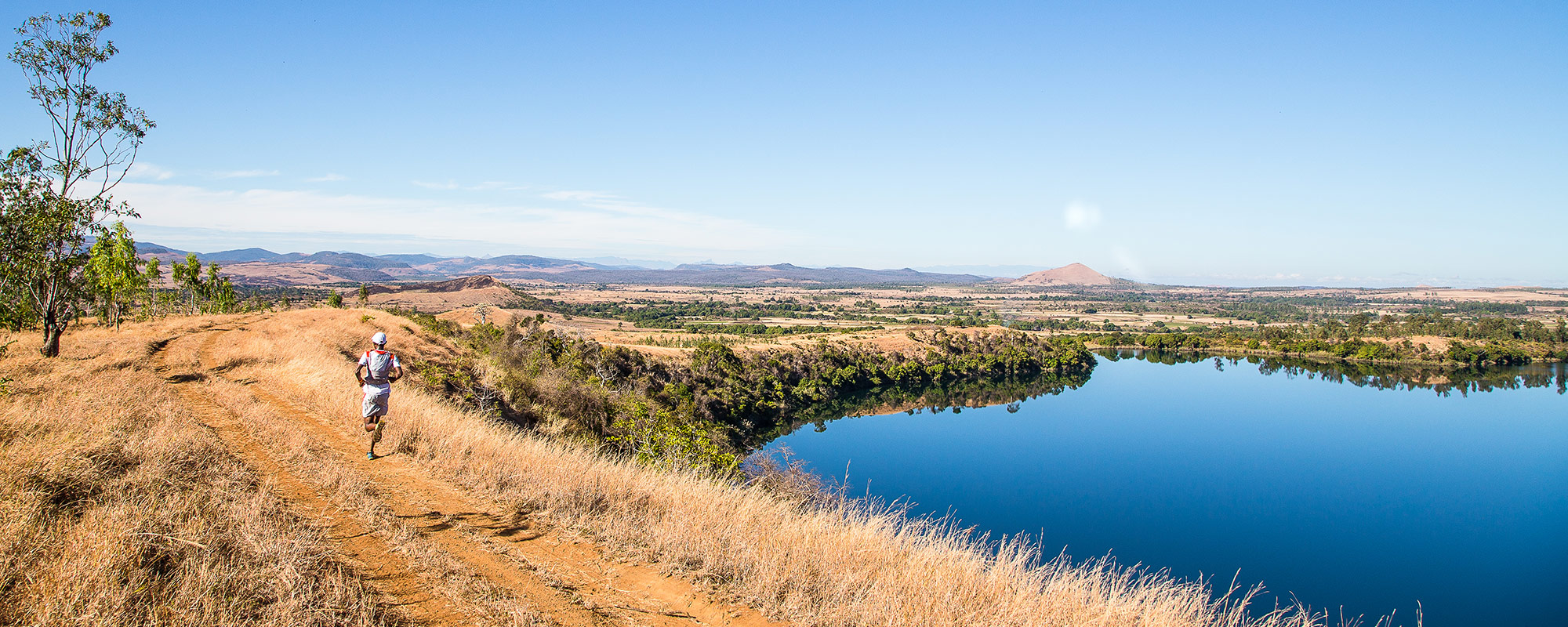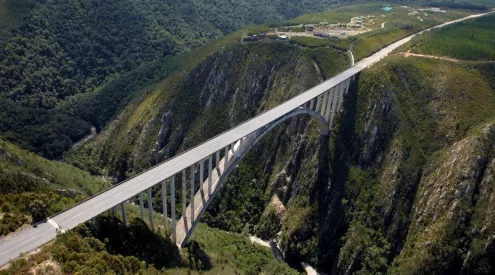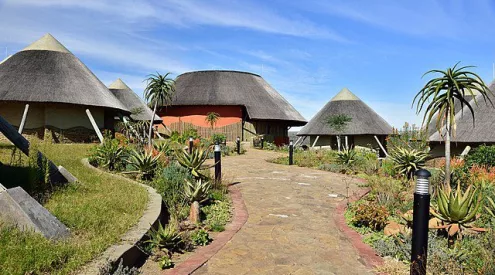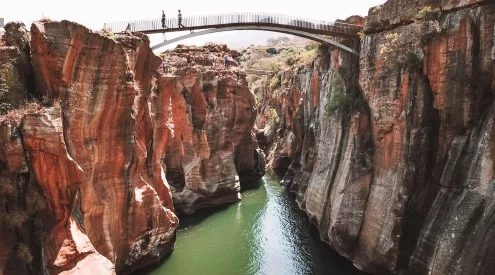I recently spent three weeks in Madagascar. The first six days was to cover an inaugural trail run that took place in the Diana Region – a remote area on the island’s north west coast. The race, called Racing Madagascar, saw runners traverse 150 kilometres of (incredibly) varied terrain over six days.
I rode most of it on a motorcycle (though I did run the second-to-last day – 28km, which felt a little like cheating) so that I could catch the frontrunners in action. Even with a Honda XR400 beneath me, it wasn’t easy to keep up. The area is wild, covered in thick coastal scrub, deep sand tracts, red laterite canyons, dense forests and very few roads. Added to that, the race was attended by some very quick individuals. Most celebrated of these was South African trail runner Thabang Madiba, who was a favourite to take the overall win. He didn’t have it all his own way. Lightning-quick locals, foreign terrain, searing heat and even some unexpected weather (we caught the tail end of a tropical cyclone on the fourth day) made for an interesting battle at the front.
The camaraderie, scenery and romance of running on one of the world’s most naturally spectacular islands made it one of the best Getaway assignments I’ve been on yet. You can read the full story in the November issue of Getaway magazine. In the meantime, here are some shots of the race, in no particular order.
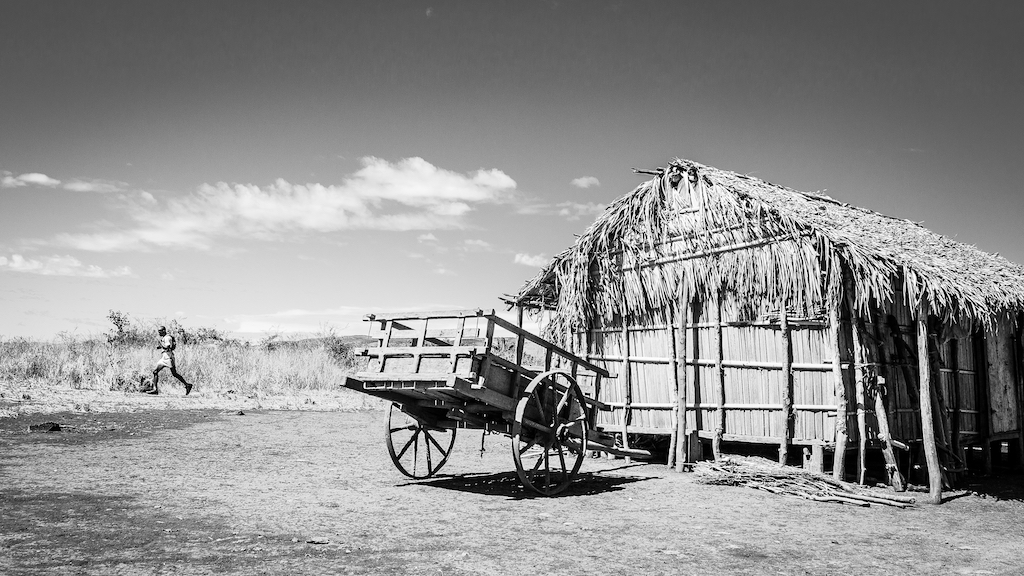
Hot, tough, and rewarding – the chance to cover an inaugural six-day, 150-km trail race in Madagascar’s remote north was too good to pass up.
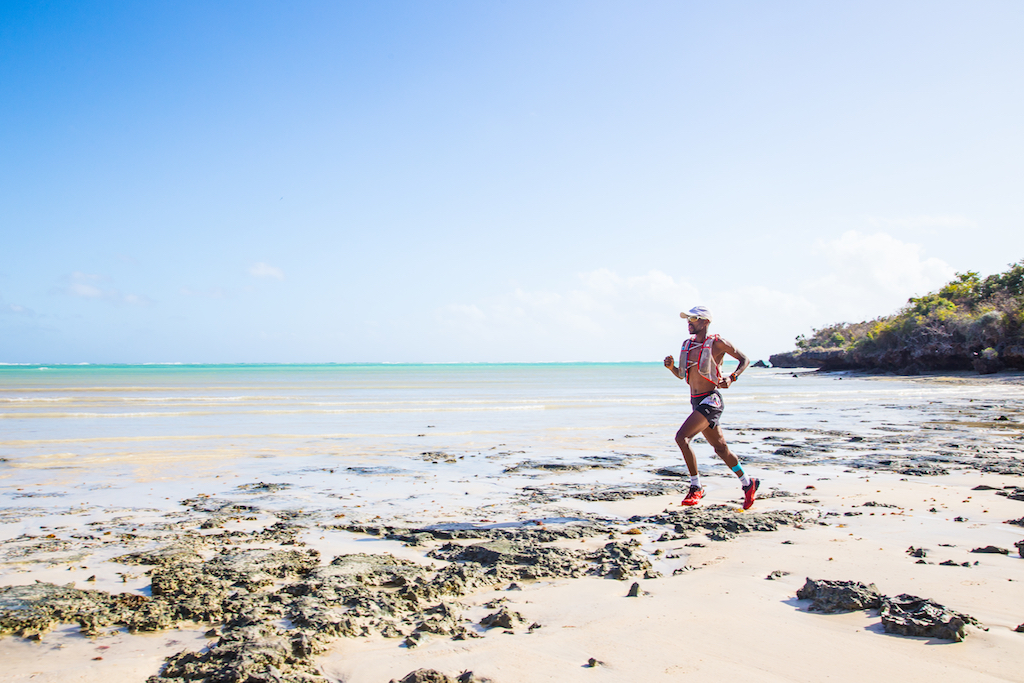
Thabang Madiba, one of South Africa’s top trail runners, rounds a secluded bay on the second-to-last day. He didn’t have it all it his own way against the locals.
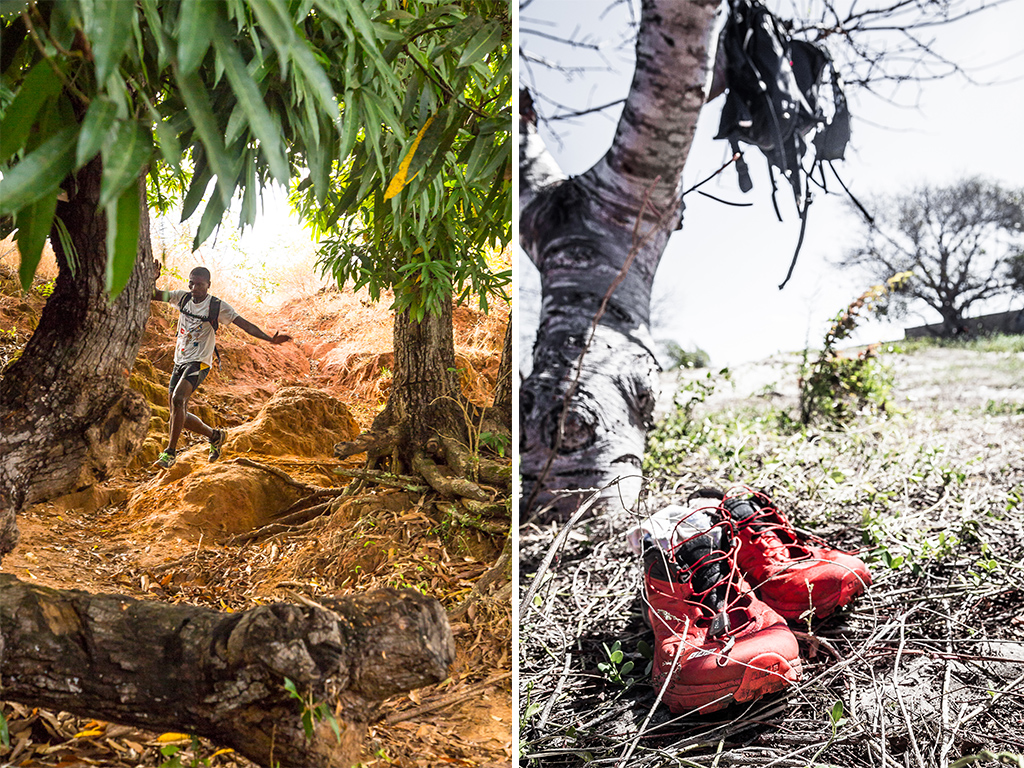
LEFT Romauld Jaoriziki came flying down this dry riverbed so quickly I barely had time to grab my camera; RIGHT Even Thabang’s shoes look fast.
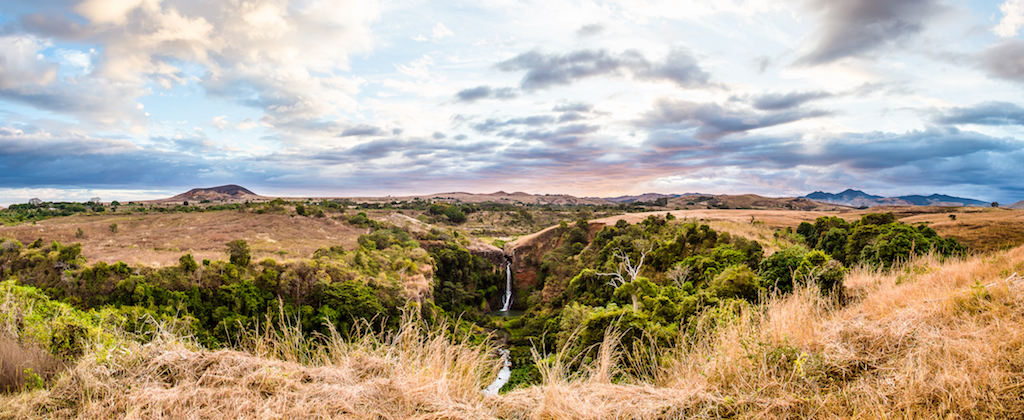
This was the view from the starting line of the inaugural Racing Madagascar trail race – above the Beamolana Waterfall in the Diana Region.
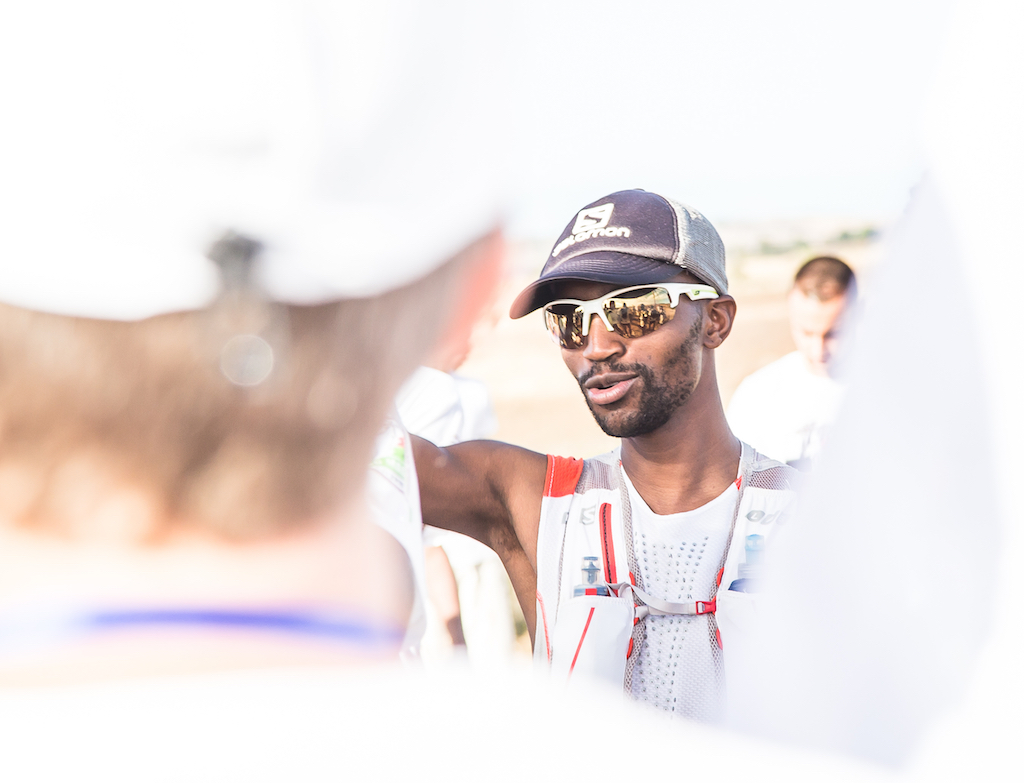
Thabang Madiba at the start line of the first day.
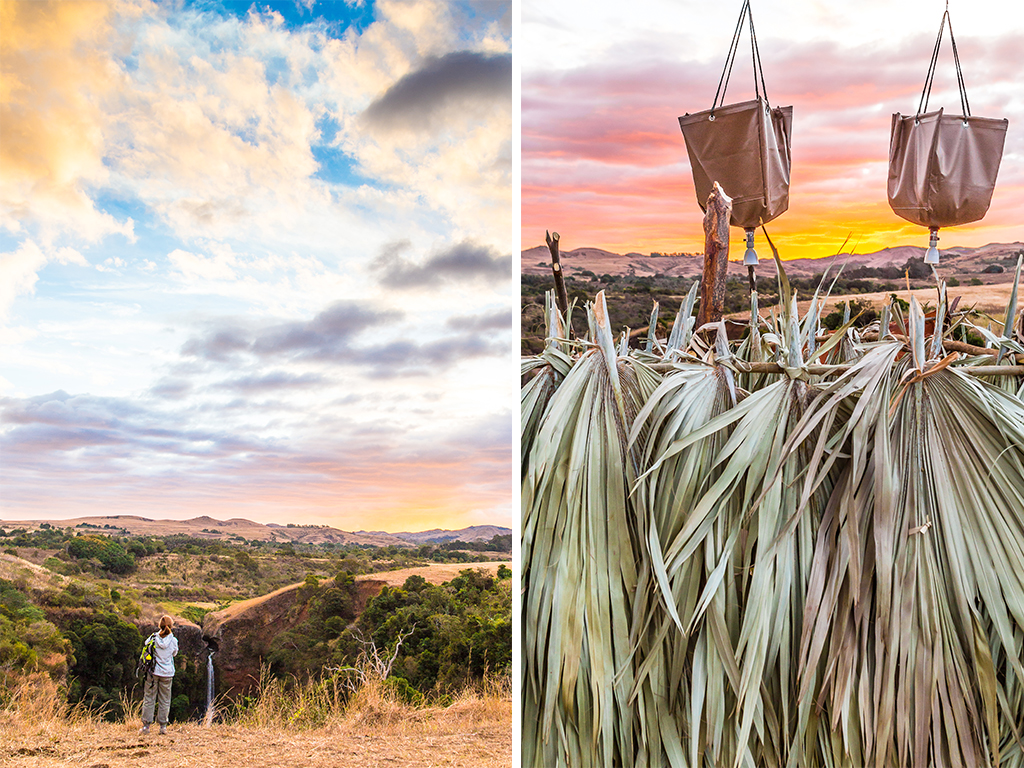
Pit loos and great views – this is what a self-sufficient stage race in one of the island’s most remote regions looks like. I call it bliss.
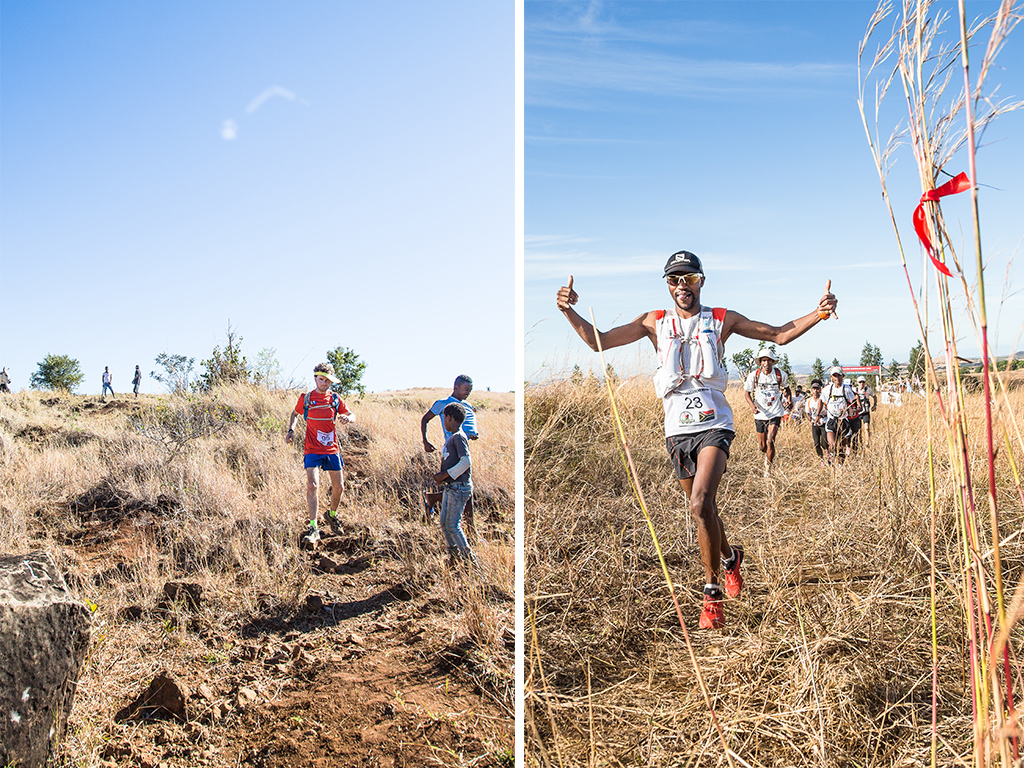
LEFT SA-runner Gavin Sacks navigating the rocky descent south of Crocodile Lake; RIGHT Thabang and his tongue – always out, always excited.
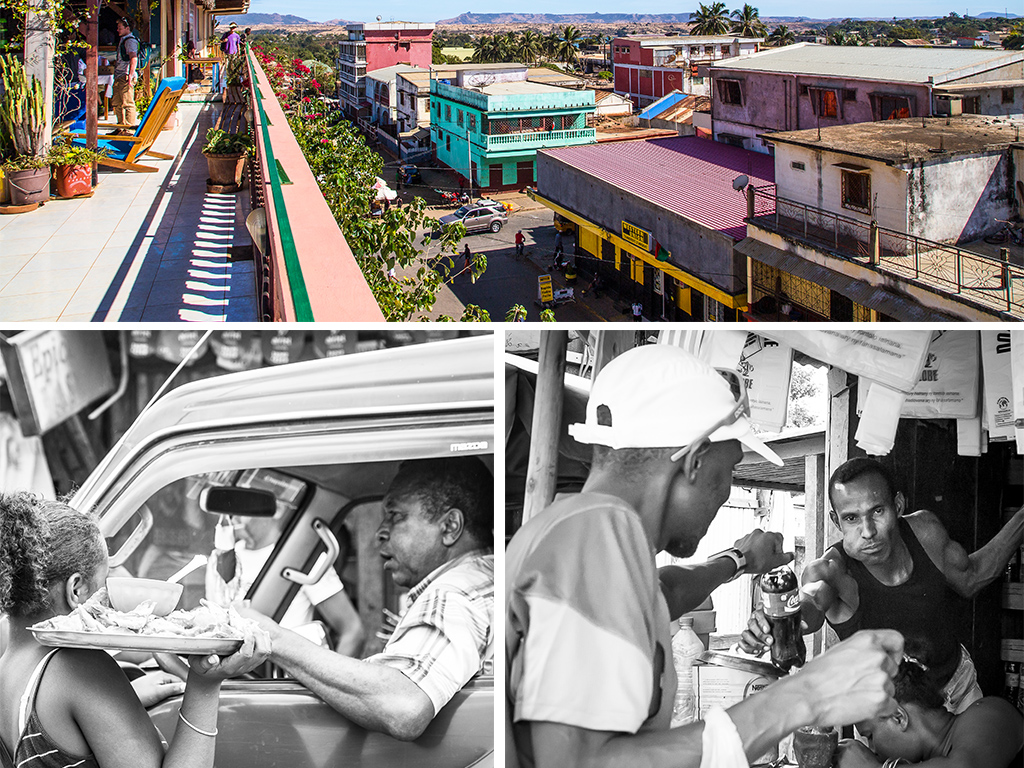
Antsiranana (formerly Diego Suarez), is an old port town on the northernmost tip of Madagascar. It’s where all the runners first met, and where the race ended. It’s beautiful, and quite mad.
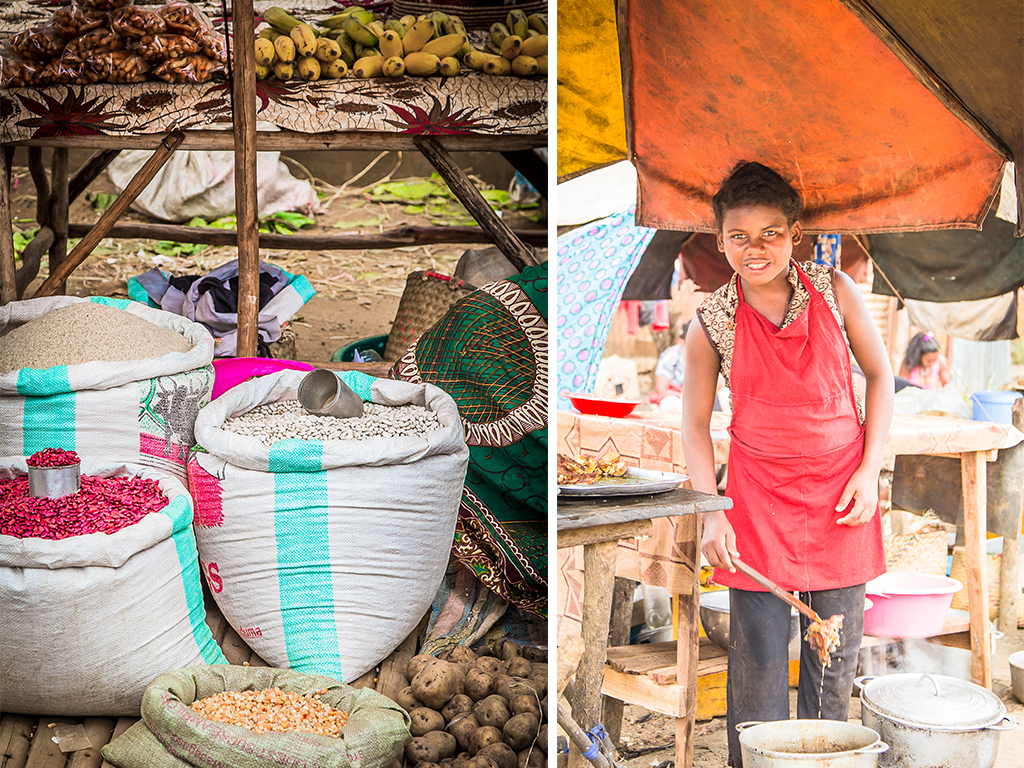
We got a few hours of downtime at the end of the first day and some of us wandered into Anivorano to check out the market where I discovered something rather interesting about the chickens on Madagascar. You’ll have to read the full story to find out what that is though.
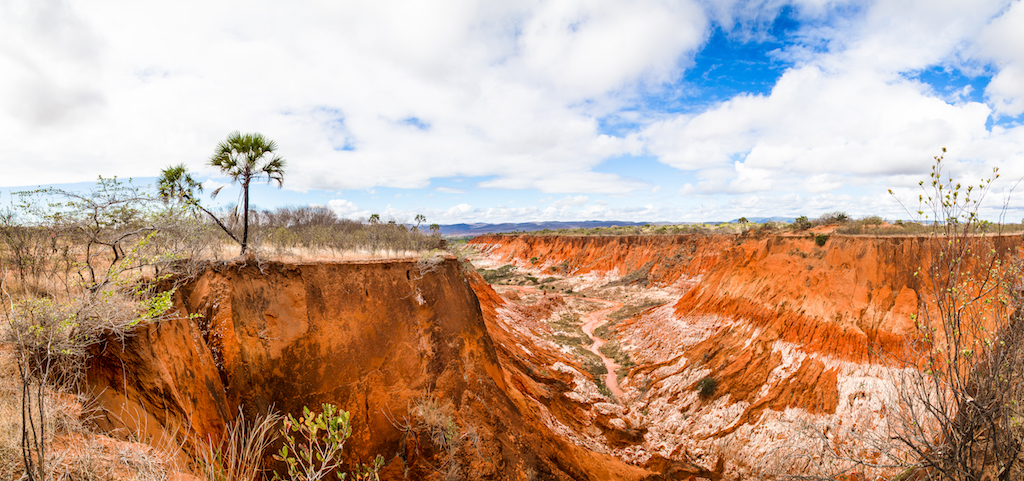
This laterite canyon, which forms the centrepiece of Tsingy Rouge national park, was created over centuries by erosion and chemical weathering.
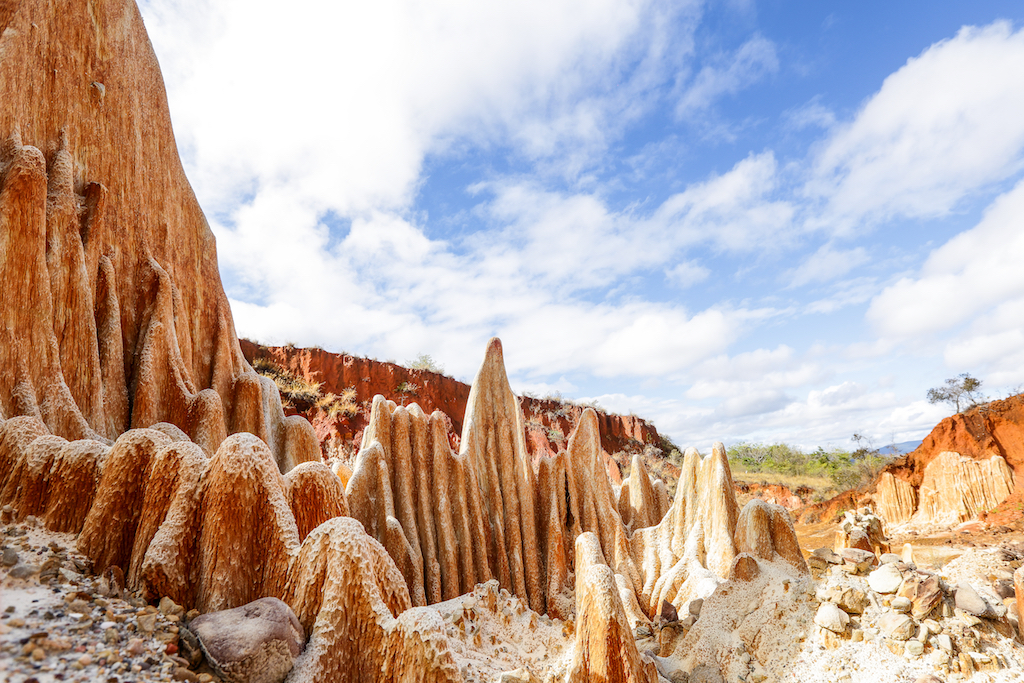
Close-up, you can see how water and wind have carved what almost looks like stalagmites out of the red canyon.
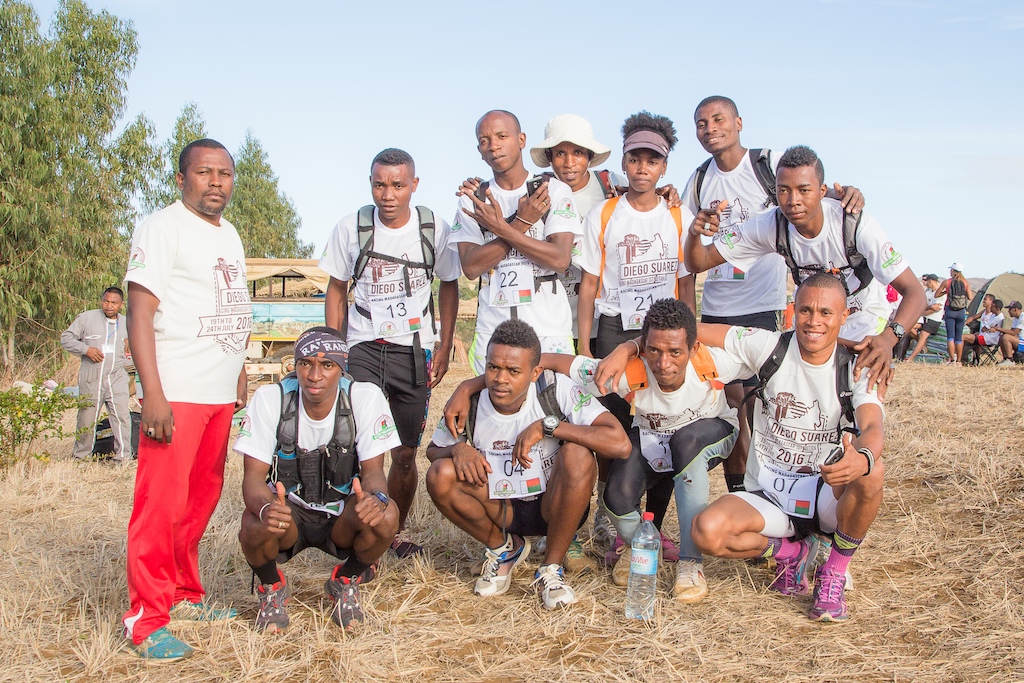
A group shot of some of the blisteringly quick Malagasy athletes that took part. From left: Coach Alphonse, Morisse Morisse, Bakany Basile, Serge Veloson, Olga Razanamalala, Romauld Jaoriziki, Fadonio Joyesnicet, Jaquis Justin Rakiky, Housseny Nasser, Herve Djaonoro, Diomi Fabricin Mahatana.
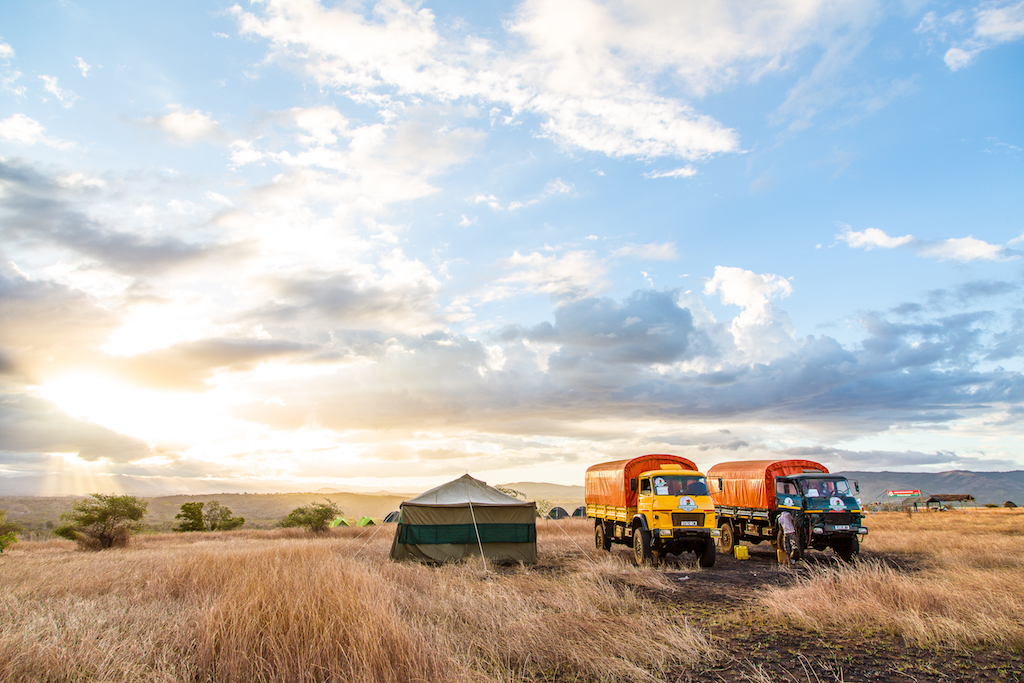
This was our campsite at the end of the second day, on a plateau above the Irodo River. Getting here, by foot, bike or vehicle, was not easy. The green Renault TRM on the right, or ‘Kosovo’ (so named because they were used in the Kosovo war) got stuck and staff had to walk about five kilometres in searing heat to camp for help … and then go back to get it unstuck. Yikes.
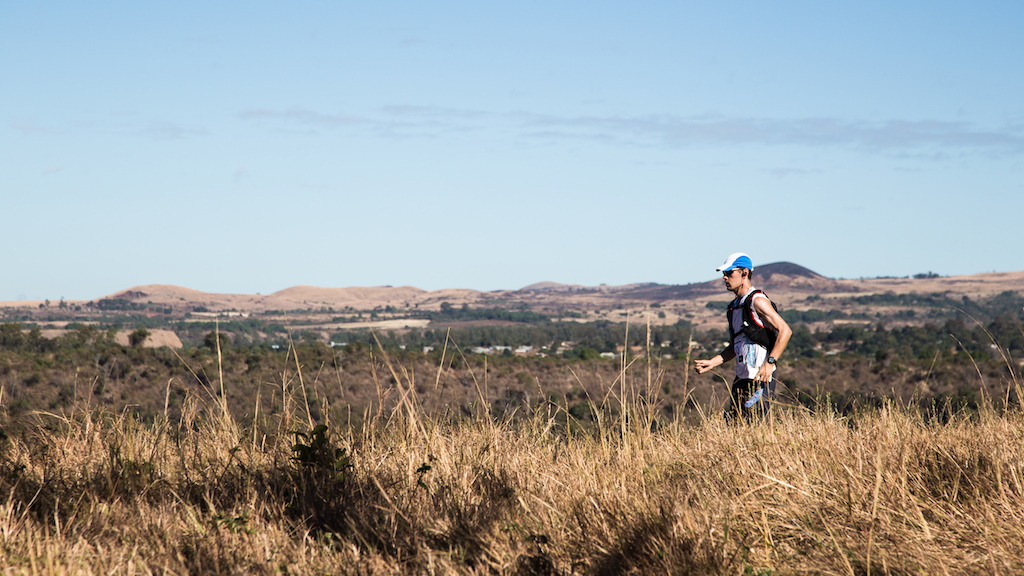
Marcus Fong travelled the furthest to be at the race. He lives in Macau, had great pace and a seemingly endless supply of freeze-dried snacks in his bag. He was my running mate for half of the 28-km stage on Day 4 that I ran. Then he buggered off leaving me to run the rest shouting in agony at the empty heavens.
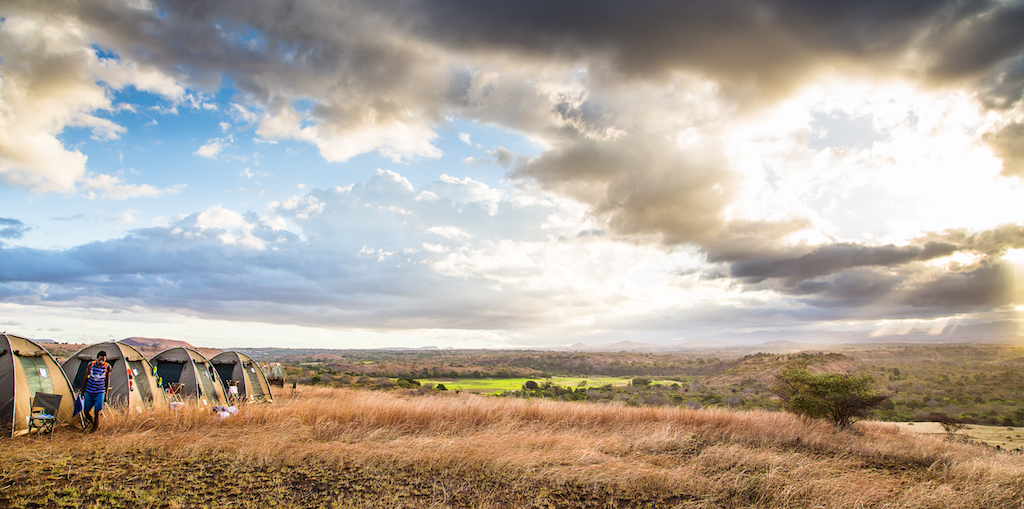
The view from our campsite at the end of Day 2. Below are rice fields fed by the Irodo River. It was the most beautiful setting of the race and many athletes, Thabang included, headed down to the river to wash their kit. Someone mentioned the word ‘crocodile’ on the way down though and that’s about the same time I made my way back up.
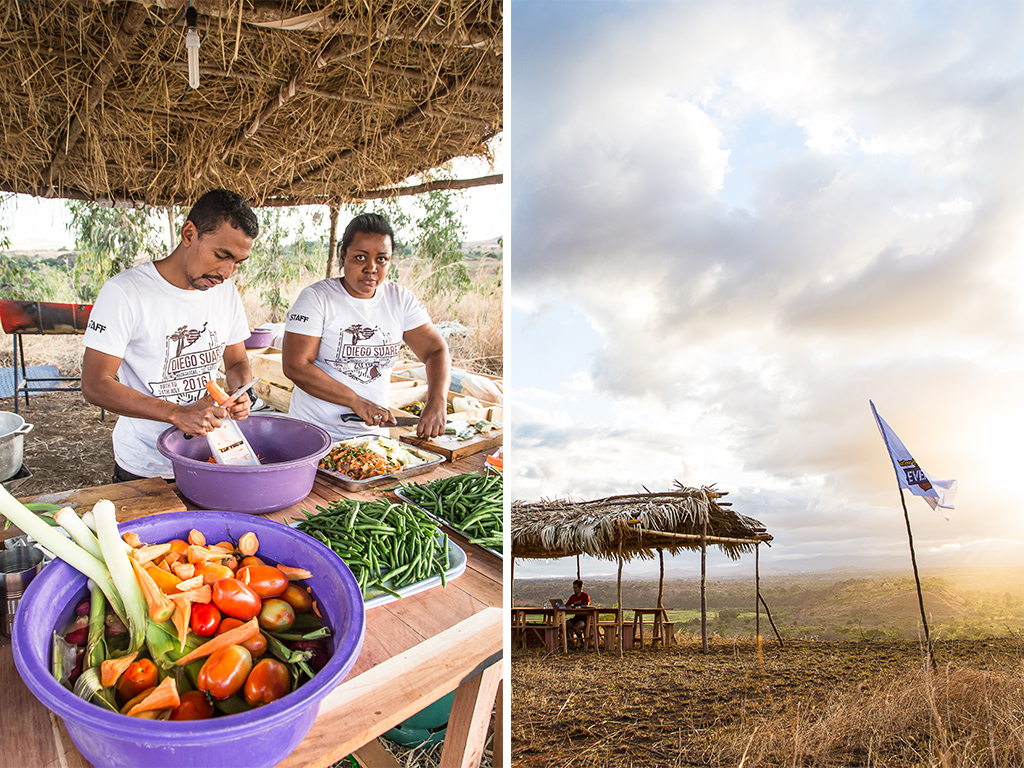
Every day, the camp facilities were built using dried palm fronds, fastened to treated poles with coarse rope. Support staff, numbering about 30, built everything from this functioning kitchen, a mess ‘hall’, medic’s tent, pit loos and showers, only to strike it down to transport to the checkpoint the next morning. It was quite incredible, and a lot of effort.
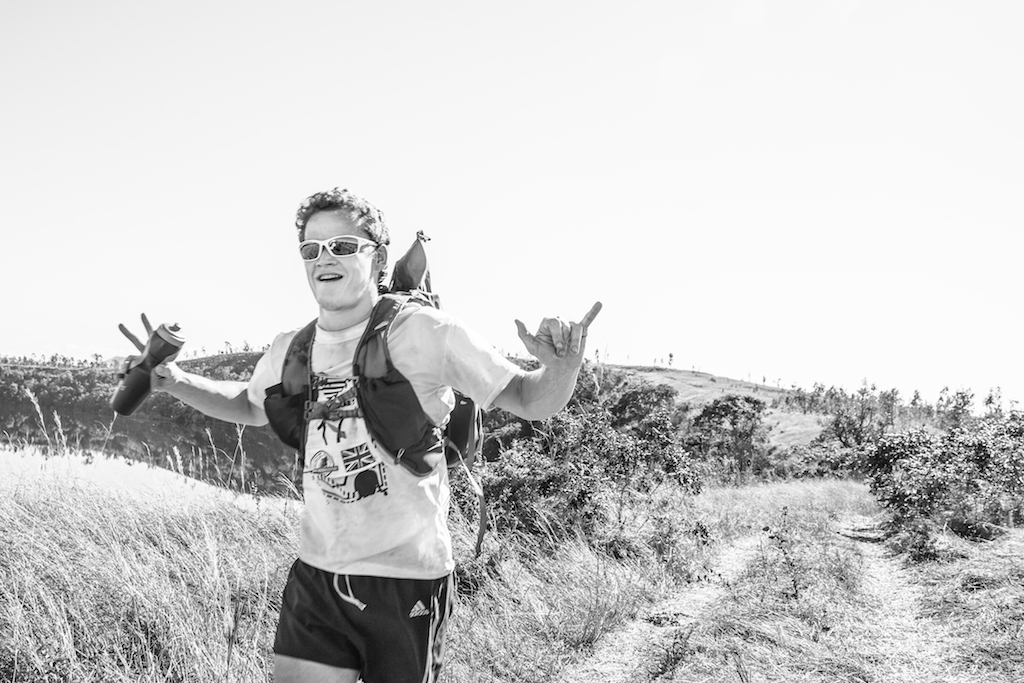
This is Englishman Steven Halton. He has cycled the length of Africa but his calves were no match for the for 42-km stage on Day 4. He looked somewhat less chuffed by the end.
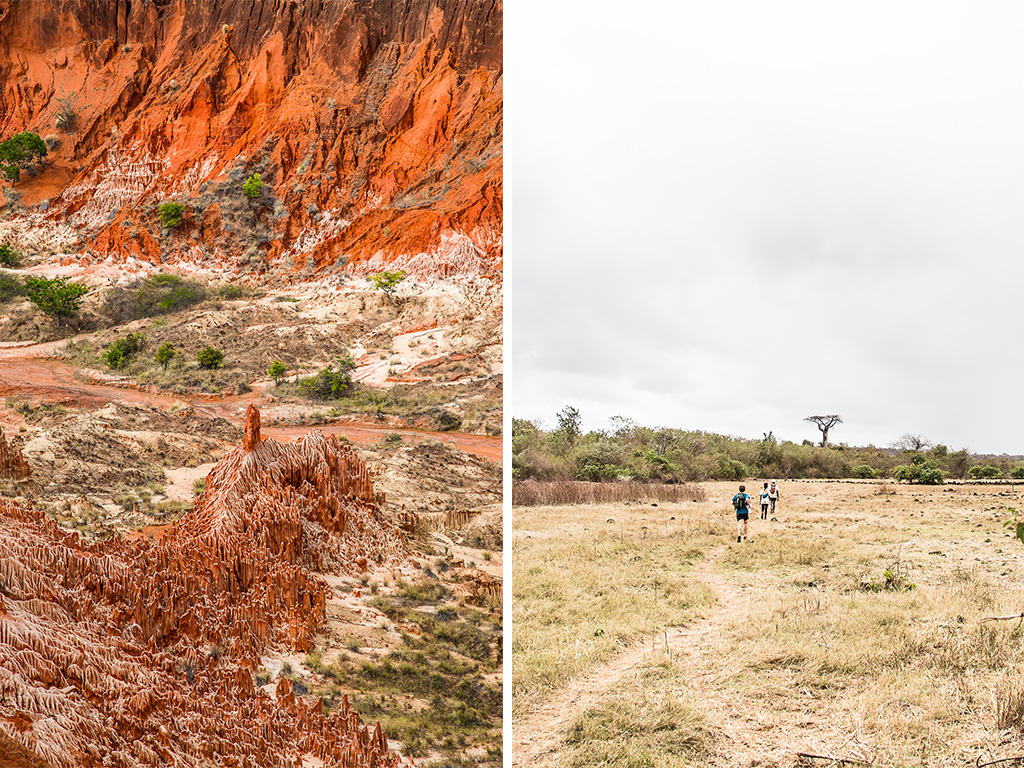
Each day presented runners with new terrain: from red canyons to secluded beaches and even a baobab forest (not that common in northern Madagascar, I discovered).
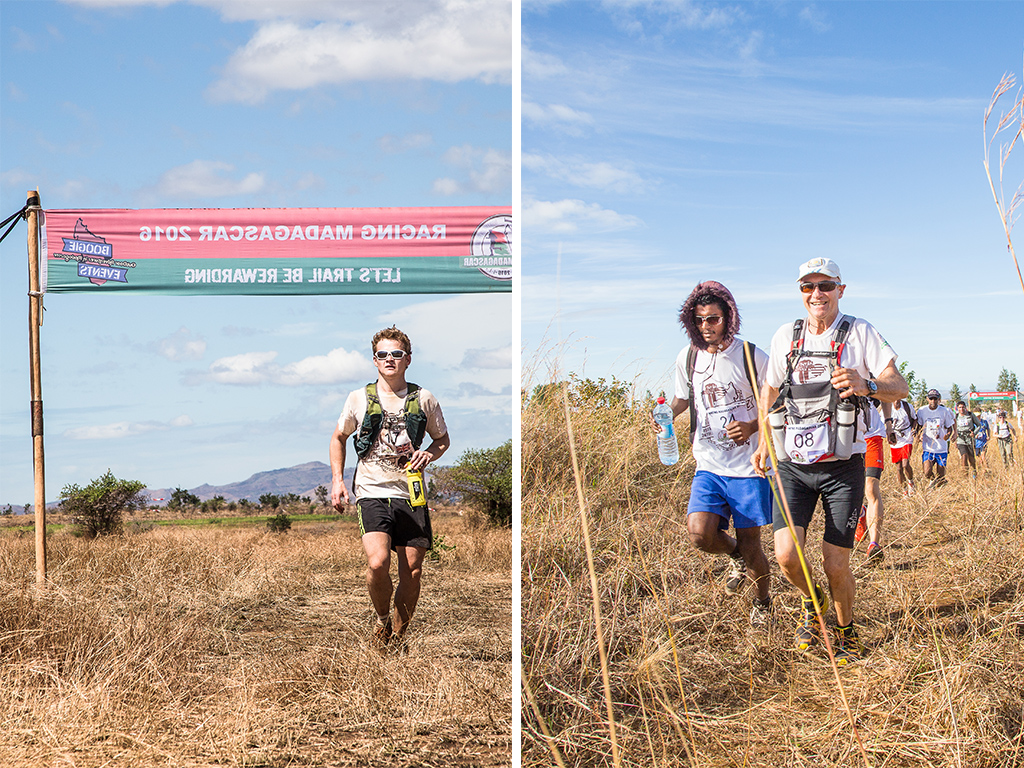
LEFT Steve Halton coming into the finish line on Day 4, wrecked; RIGHT Luis Rene Menendez (Argentina) and Julio Stephane Billet (Madagascar) start the 20-km stage on Day 1.
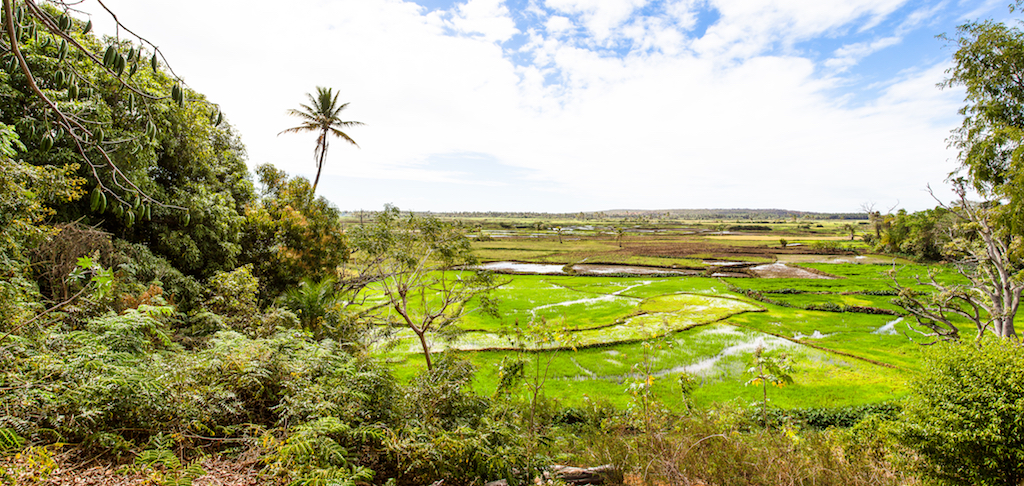
Rice is Madagascar’s staple food (per capita, it’s actually one of the world’s top rice-consuming nations) and is grown in waterlogged fields fed by mud- and clay-built channels. The channels also double as walkways for farmers and locals to cross the fields. We passed many along the route.
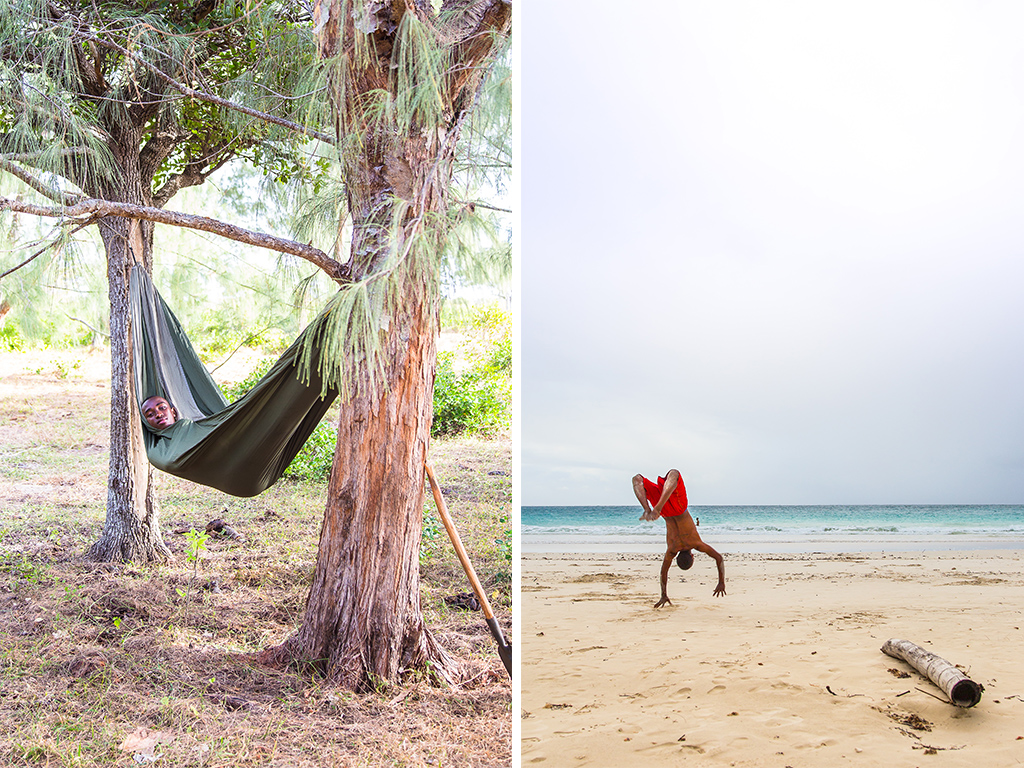
RIGHT Day 4 of the race was a killer – 42 kilometres in 32-degree-plus heat. Though weary and shattered, some still felt compelled to do flick flacks on the beach. LEFT Jaquis Justin Rakiky didn’t though, (smart guy) and instead took a nap in my hammock.
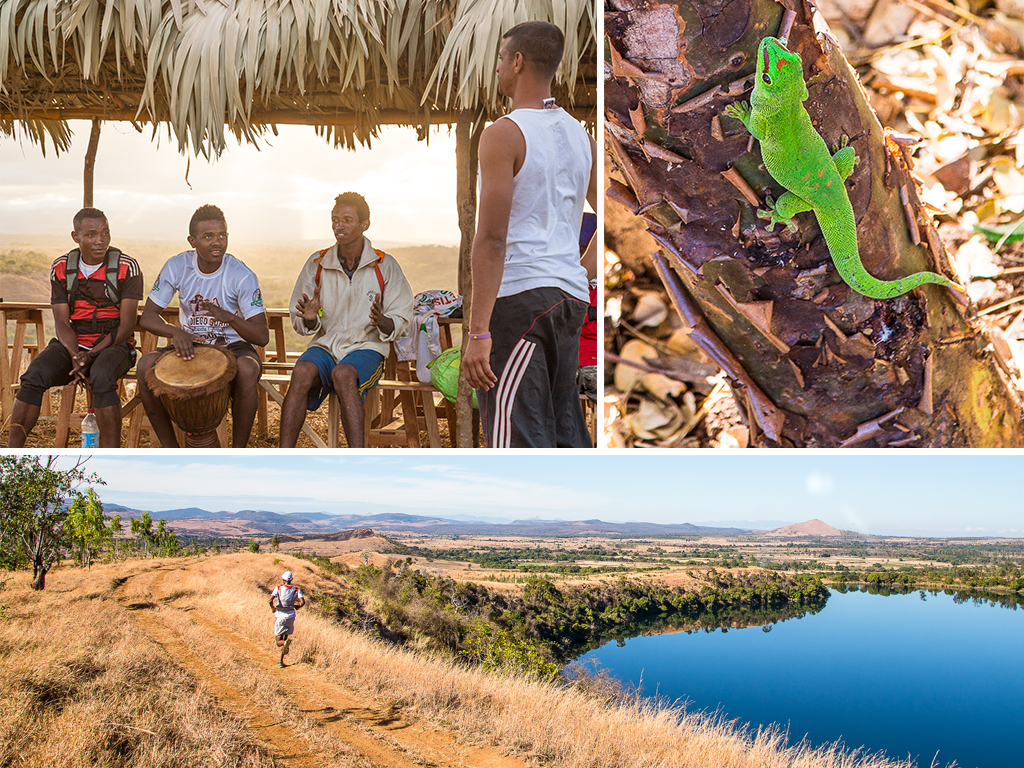
TOP LEFT Music of all sorts (whether djembe drums, singing or crackling cellphones floating up gorgeous Malagasy lyrics) filled the air every afternoon; TOP RIGHT the giant day gecko has no eyelids – instead it just licks its eyeballs; BOTTOM Thabang rounding Crocodile Lake on the second day – so named because, you guessed it… it’s teeming with crocs.
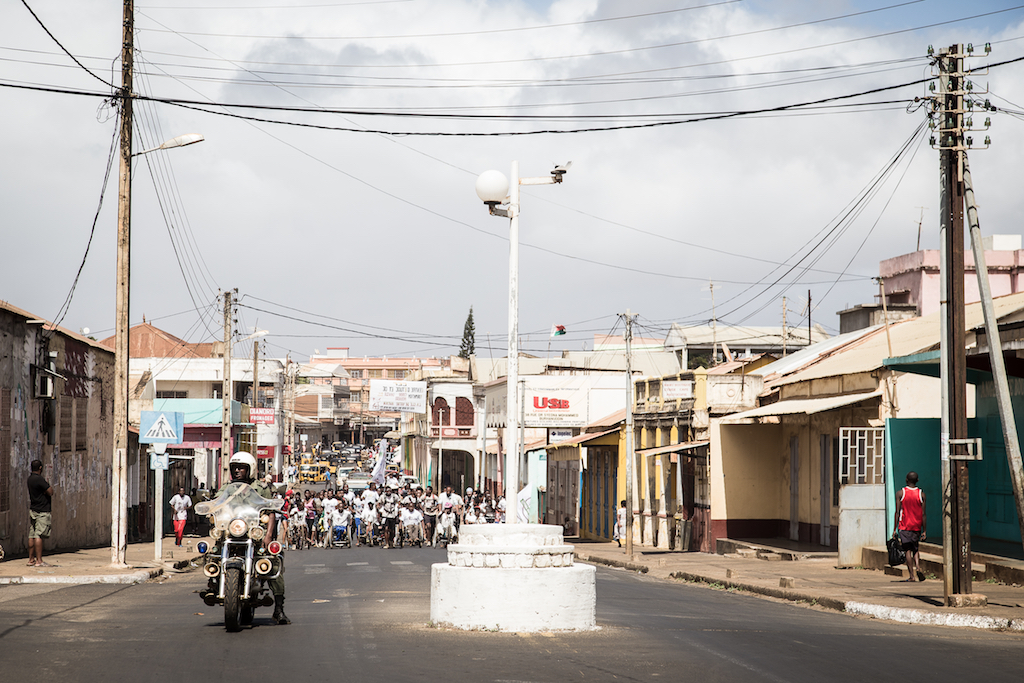
On the final day of Racing Madagascar, trail runners were joined by wheelchair athletes (to whom proceeds gained from entry fees went) in a five-kilometre ceremonial shuffle from the outskirts of Diego Suarez to the town centre.
Despite there being just two South African runners in this year’s event (excluding me, of course. Running 28 out of 150 km makes you as much of a multi-day trail runner as sitting in the bath makes you a duck) it was great to follow the progress of my two compatriots, Gavin and Thabang. Hopefully next year there’ll be more. If you’re interested in the 2017 event, grab a copy of the November issue to find out a little more and check out racing-madagascar.com for the route and rules.
Read more from this story in the November 2016 issue of Getaway magazine.
Our November issue features the next adventure frontier of Madagascar, affordable breaks in Hogsback, and what to do in the Cradle of Humankind.










